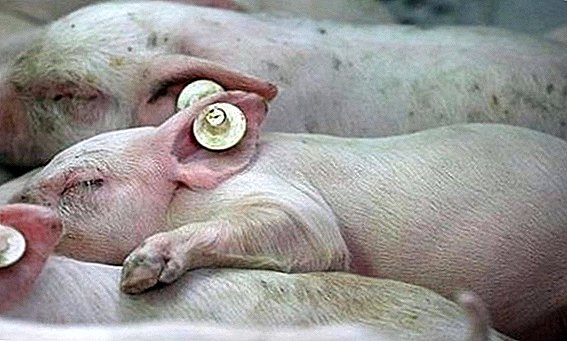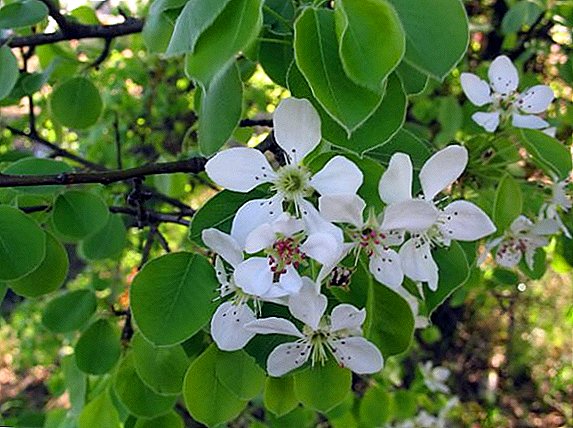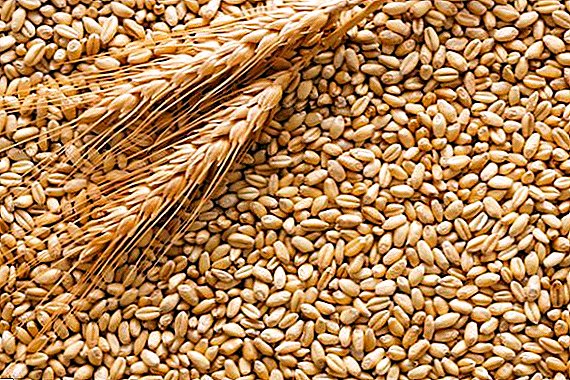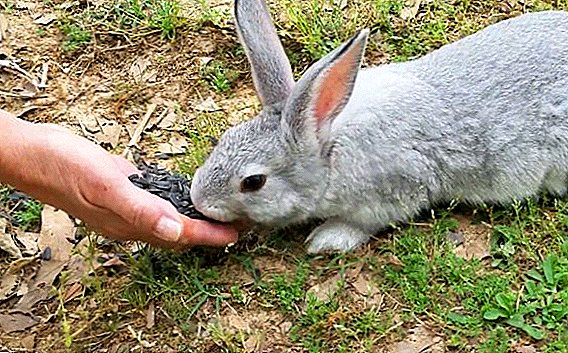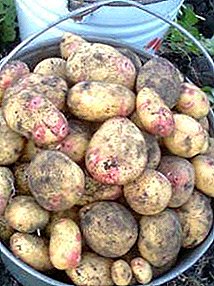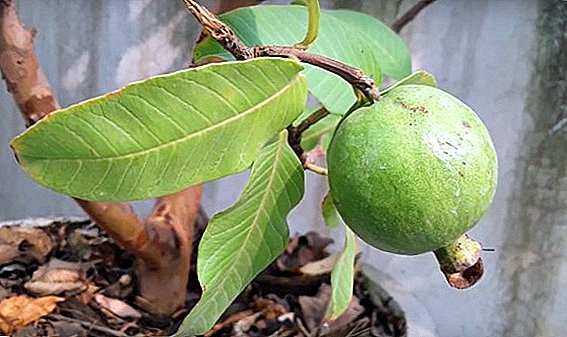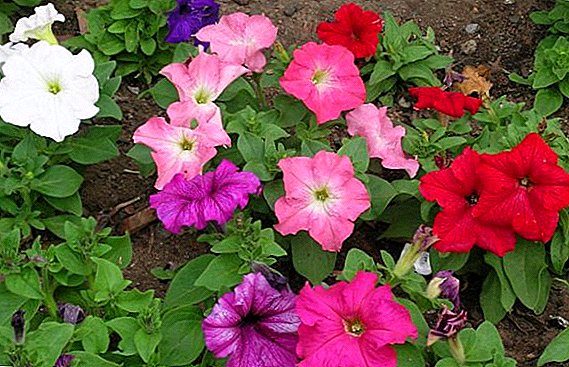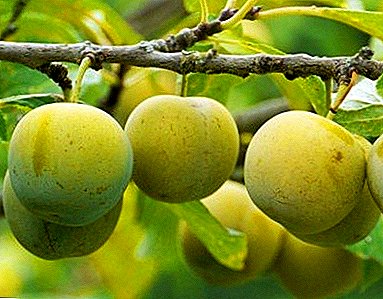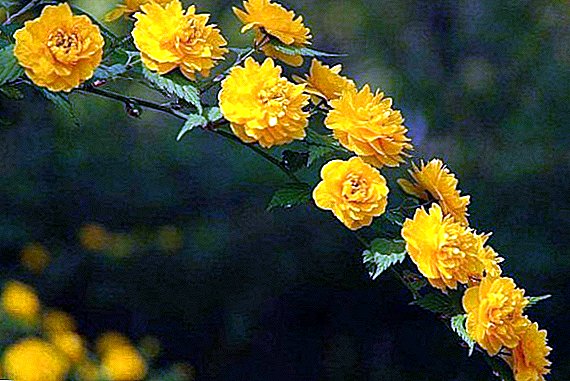 From May to July, the ornamental shrub Kerrija adorns the garden with its sprawling branches, densely covered with small roses of rich yellow color and neat foliage.
From May to July, the ornamental shrub Kerrija adorns the garden with its sprawling branches, densely covered with small roses of rich yellow color and neat foliage.
This solar culture from the Rosaceae family looks very bright and cheerful against the backdrop of awakening nature.
The most popular varieties and forms of deciduous shrub will be discussed further.
Pleniflora
Kerria Pleniflora (kerria japonica Pleniflora) is one of the decorative forms of the Japanese variety.
It is a densely flowering shrub up to 2 m in height, of a compact spherical shape with upward branches, which generously cover large rosettes-pompons of yellow color with terry petals. In diameter, the crown reaches 130 cm. Each flower is a terry with a diameter of about 4-6 cm. In the leaf sinuses, they are arranged singly or grouped in several pieces. The variety is often cultivated in landscape gardening areas. Propagated by grafting. Intensively growing.
Prefers solar sites, can adapt to a penumbra, badly reacts to drafts and strong winds. Shrub should be planted on enriched wet soils.
Did you know? Kerria is named after the gardener of the Royal Botanic Gardens, Kew, and an oriental vegetation collector, William Kerr, who spent more than 8 years on a Chinese expedition in search of new, unknown plants.
Albiflora
Shrubs of the variety Albiflora (kerria japonica Albiflora) stretch up to 1.5–2 m and branch out 1.2 m wide.
Outwardly, these are beautiful fan-shaped bushes with slightly drooping branches, which, during flowering, are covered with white small flowers. Their petals are simple, so visually inflorescences seem small.  Albiflora is also a kerriya of the Japanese variety. The plant is distinguished by one hundred percent rooting of cuttings and good winter hardiness.
Albiflora is also a kerriya of the Japanese variety. The plant is distinguished by one hundred percent rooting of cuttings and good winter hardiness.
Important! So that the bush of Kerria always had a neat appearance and did not grow, it is necessary to cut them annually, removing the tops of the branches and the old stems at the roots after flowering.
Albarmargin
This shrub (kerria Albomarginata) appeared in the culture in 1834, it looks very impressive, because the decorations give it not only flowers, but also foliage.
Like the Kerriya, the Rosy family includes felt cherry, fieldfare, cherry plum, spirea, cotoneaster.On each leaflet, which is located alternately on the branches, there is a clear white border. The leaf has the shape of an elongated oval. The edges of the leaves are sharp, jagged. Length up to 10 cm.
The plant develops rather slowly, the branches grow asymmetrically. Albarmargin is a rare plant that can be found in the gardens of ardent collectors. In addition, the shrub requires special conditions and very delicate care. 
Variegata
Kerria Japanese Variegata (kerria japonica Variegata) is a variegated form of ornamental shrubs. Its stems develop to a height of 1.5, and the branches grow in breadth only up to 60 cm. The crown is distinguished by its elegance and accuracy of branches spread to the sides.
The leaves of the plant look very attractive, which are characterized by creamy white specks and cream touches. They have a smooth surface, the shape of an elongated oval with a pointed end and jagged edges. Foliage is a lot like raspberries.
The buds are yellow with simple petals, but their feature lies in large sizes. The diameter of one rose is about 8–9 cm. From May to July, the stems of Variegata are covered with a solid color, and it appears earlier than other plants that bloom in spring. And when the buds bloom, variegated foliage remains on the bush. Occasionally during the warm season, single flowers appear among the colorful foliage.  The variety is not adapted to the harsh winters, but its peculiarity is that frostbite specimens intensively increase biomass from new shoots.
The variety is not adapted to the harsh winters, but its peculiarity is that frostbite specimens intensively increase biomass from new shoots.
Important! Manure is not suitable for fertilizing. It is better to use a mixture of compost and wood ash, poured it around the bush with a ball up to 5 cm.
Golden Guinea
English coins of pure gold resemble the flowers of the variety "Golden Guinea" (kerria Golden Guinea), with which it is customary to associate the origin of the name of this kerriya.
You will be interested to know about such ornamental shrubs as kupressoparis, mountain pine, yew, skumpiya, decorative honeysuckle.Shrub actively branched in width. In May, bright yellow-gold buds with 5 petals appear on it. Each flower in diameter reaches 5-6 cm. The leaves are distinguished by their elegance, their surface is smooth, and the inside is pubescent.
 Shrub during flowering has a delicate aroma. In the fall, its foliage becomes yellow-melon. Under favorable conditions for the cultivation of Kerriya can please the second autumn flowering.
Shrub during flowering has a delicate aroma. In the fall, its foliage becomes yellow-melon. Under favorable conditions for the cultivation of Kerriya can please the second autumn flowering.Did you know? In China, in the birthplace of kerria, the bush is called the "Easter rose", which is due to the time and form of its flowering.
Simplex
The shrub of this variety of keria (kerria Simplex) has a spherical shape of a bush, which intensively expands in breadth, rather than upwards. It has bright yellow flowers of medium size. Located in the axils of the leaves, appear in May alone or in inflorescences of 4-5 buds. During flowering, the plant resembles a golden ball. The leaves of the bush are ordinary, green.  Any kind of this shrub will look spectacular as a hedge, in mixborders or against the background of spring primroses. So try to find a corner for your garden in your garden, because with its elegance it will undoubtedly please you and those around you.
Any kind of this shrub will look spectacular as a hedge, in mixborders or against the background of spring primroses. So try to find a corner for your garden in your garden, because with its elegance it will undoubtedly please you and those around you.



